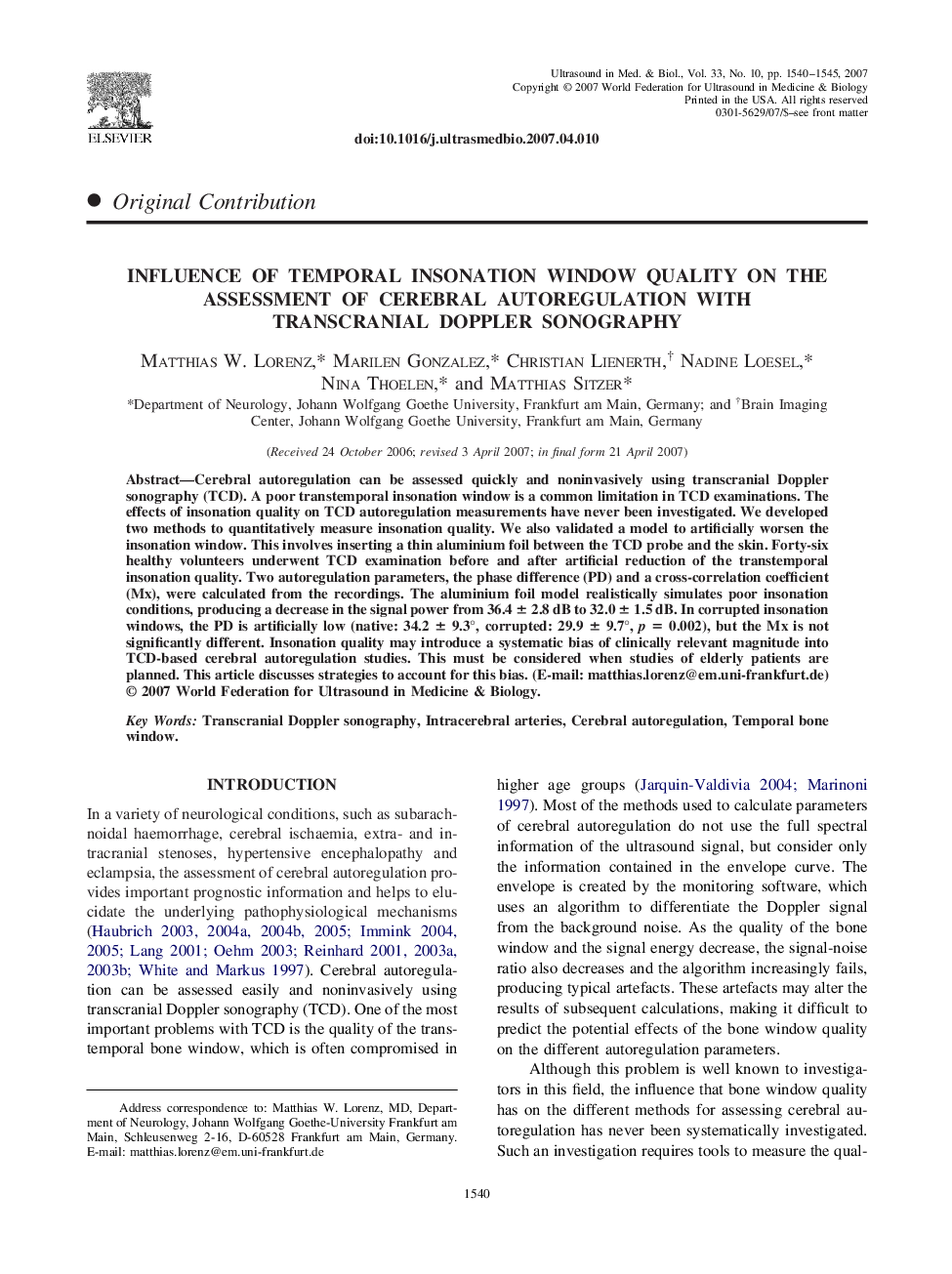| Article ID | Journal | Published Year | Pages | File Type |
|---|---|---|---|---|
| 1762453 | Ultrasound in Medicine & Biology | 2007 | 6 Pages |
Abstract
Cerebral autoregulation can be assessed quickly and noninvasively using transcranial Doppler sonography (TCD). A poor transtemporal insonation window is a common limitation in TCD examinations. The effects of insonation quality on TCD autoregulation measurements have never been investigated. We developed two methods to quantitatively measure insonation quality. We also validated a model to artificially worsen the insonation window. This involves inserting a thin aluminium foil between the TCD probe and the skin. Forty-six healthy volunteers underwent TCD examination before and after artificial reduction of the transtemporal insonation quality. Two autoregulation parameters, the phase difference (PD) and a cross-correlation coefficient (Mx), were calculated from the recordings. The aluminium foil model realistically simulates poor insonation conditions, producing a decrease in the signal power from 36.4 ± 2.8 dB to 32.0 ± 1.5 dB. In corrupted insonation windows, the PD is artificially low (native: 34.2 ± 9.3°, corrupted: 29.9 ± 9.7°, p = 0.002), but the Mx is not significantly different. Insonation quality may introduce a systematic bias of clinically relevant magnitude into TCD-based cerebral autoregulation studies. This must be considered when studies of elderly patients are planned. This article discusses strategies to account for this bias. (E-mail: mailto:[email protected])
Related Topics
Physical Sciences and Engineering
Physics and Astronomy
Acoustics and Ultrasonics
Authors
Matthias W. Lorenz, Marilen Gonzalez, Christian Lienerth, Nadine Loesel, Nina Thoelen, Matthias Sitzer,
